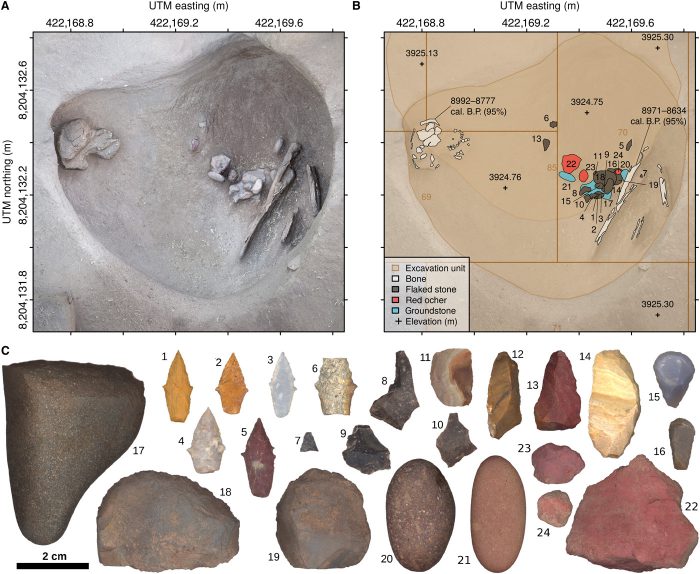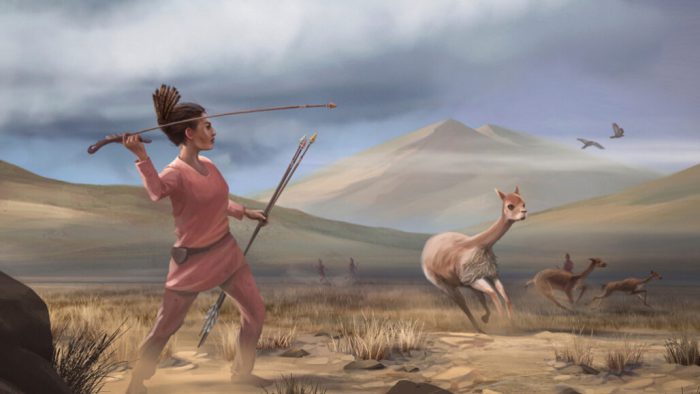The really interesting thing about archeology (the study of human) and paleonotology (the study of all other ancient life), is that we're always only one find away from changing how we view the past.
Take dinosaurs and feathers for example. It wasn't that long ago that we all thought that dinosaurs were only scaly skinned creatures. Now we know that feathered dinos were common.
Now a new archeological find in Peru is changing how historians view ancient gender roles, or the tasks performed by each gender in a society. In the ancient Americas (what is now North and South America), a women's role was previously believed to have focused mainly on gathering plants and caring for children. Instead, new evidence is claiming that there were many female hunters as well.
Let's get to the point

This image shows the site of the grave (top left), a labeled map of the grave (top right), and the collection of all of the pieces found, including spear points. (Randall Haas, University of California, Davis)
The new find was of a woman who was buried with spear points and other hunting tools. She was found at a site called Wilamaya Patjxa in the Andes highlands of Peru. Experts estimate that the grave is about 9,000 years old.
At the time, an alpaca relative called the vicuña would've been the main animal hunted. These people were hunter-gatherers, meaning they did not farm crops—they lived off hunting animals for food and collecting plant life that grew wild.
This grave is not the first time that women in these areas have been found buried with spear points. In the past though, many people simply concluded that these were scraping or cutting tools, not weapons. But according to a new report from researchers from the University of California, Davis and the University of Louisville, it's time to realize that female hunters existed. Team leader, archeologist Randall Haas, says that about half of the hunters were women.
Splitting the duties
A vicuña wanders through the Andes mountains. (Getty Embed)
Why would this fact be hard to accept? A big reason is that in modern hunter-gatherer societies, the hunters are commonly men. Many of these societies have lived virtually unchanged for hundreds, even thousands of years. So historians have concluded that these are the way that the gender roles have always been.
Not so, according to Haas' team. They say their evidence proves that what is true now, or even a thousand years ago, might not have been true back then.
They surveyed over 100 digs that date back between 6,000 to 12,000 years ago and found evidence that almost the same number of women were buried with spears as were men. Though these findings aren't fully conclusive, it's a thrilling concept. And as Bonnie L. Pitblado, an anthropologist at the University of Oklahoma, told the New York Times, the idea that female hunters were the norm is “well-reasoned and an important idea for future testing.”
Sounds like there's only one thing left to do. Keep hunting for the truth!
 This illustration shows a female hunter taking aim at a vicuña. (Matthew Verdolivo/UC Davis)
This illustration shows a female hunter taking aim at a vicuña. (Matthew Verdolivo/UC Davis)










You forgot about Artemis, greek godess of the hunt.